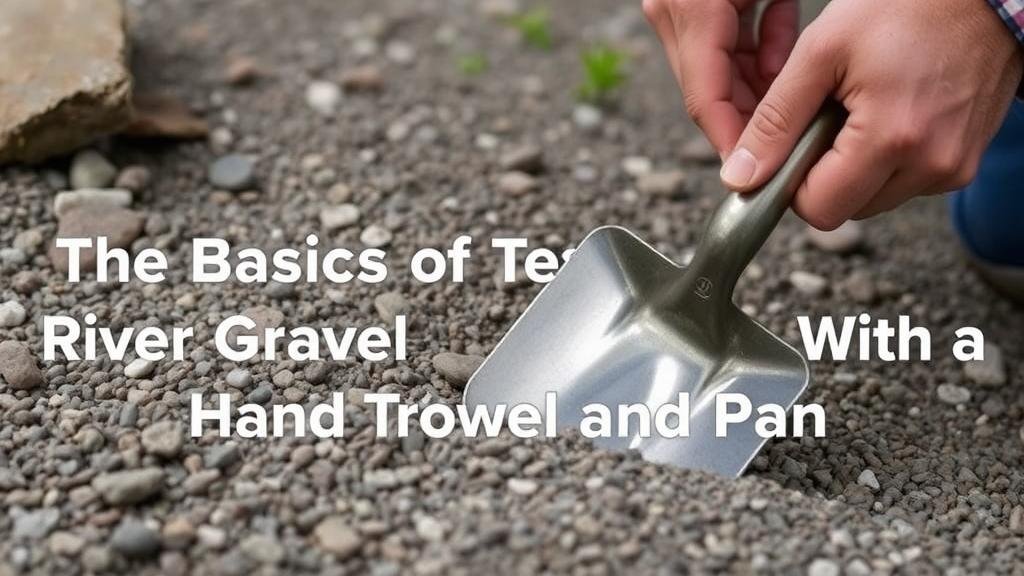The Basics of Testing River Gravel With a Hand Trowel and Pan
The Basics of Testing River Gravel With a Hand Trowel and Pan
Testing river gravel is essential for various construction and landscaping purposes. Proper evaluation of the gravels characteristics can ensure suitability for specific projects such as concrete production, drainage systems, and road construction. This article outlines the fundamental methodologies for testing river gravel using simple tools: a hand trowel and a pan.
Importance of Testing River Gravel
Understanding the composition and quality of river gravel is critical for several reasons:
- Ensures structural integrity in construction projects.
- Identifies potential contaminants that may affect concrete properties.
- Aids in determining the suitability for landscaping applications.
Inadequate testing can lead to structural failures, costly repairs, or even project delays. efore, performing tests using accessible tools like a hand trowel and pan is a practical approach for many professionals, especially in remote or resource-limited locations.
Tools Required for Testing
To conduct a thorough assessment of river gravel, the following tools are necessary:
- Hand Trowel: A small handheld tool with a pointed, scoop-shaped metal blade, ideal for digging and sampling.
- Pan: A flat, shallow container used to hold and visually inspect the gravel sample.
With these two tools, practitioners can effectively collect and examine samples to gain insight into the gravels characteristics.
Step-by-Step Testing Process
The testing process can be broken down into several key steps:
- Sample Collection: Use the hand trowel to scoop gravel from different areas of the riverbed to obtain a representative sample. Aim for a quantity of about 5 liters to ensure adequate testing.
- Initial Visual Inspection: Pour the collected sample into the pan. Conduct a visual examination for size, color, and general condition. Note any visible organic materials or contaminants.
- Gradation Analysis: To differentiate particle sizes, use the trowel to separate finer sands from coarser gravel. A simple sieve can be used for a more precise gradation, but if unavailable, the hand-sorting method suffices.
- Moisture Content Evaluation: Weigh the sample wet and then allow it to dry in the sun or an oven. After drying, weigh the sample again. difference in weight provides an indication of moisture content, which is essential for concrete applications.
These methods yield critical data about the gravels composition and quality.
Interpreting Test Results
Once the testing process is complete, it is vital to interpret the results accurately:
- Physical Characteristics: Look for uniformity in size and shape. Rounded particles are generally preferable for concrete, while angular particles provide better interlocking.
- Organic Contamination: Presence of organic materials like leaves or wood can adversely affect concrete strength. If such materials are found, consider the gravel unsuitable for structural applications.
- Moisture Content: High moisture content can weaken concrete. Ideally, moisture content should be below 5% for optimal performance.
Real-World Applications of River Gravel Testing
The information gathered from testing river gravel has significant implications:
- Building Foundations: Engineers use gravel with optimal characteristics to ensure robust foundations for structures.
- Infrastructure Development: Road construction projects require specific gravel gradations for durability and stability.
- Landscaping: Landscapers select suitable gravel types for aesthetic and drainage purposes, affecting plant health and soil stability.
Conclusion and Actionable Takeaways
Testing river gravel with a hand trowel and pan is a straightforward yet effective method for assessing its suitability for various applications. By following the outlined steps, practitioners can ensure their gravel meets the necessary standards for construction and landscaping uses. Regular testing of river gravel can lead to better decision-making, prevent costly project complications, and promote safer construction practices.
In summary, remember to:
- Collect representative samples from various points.
- Conduct thorough visual inspections for contamination.
- Evaluate gradation and moisture content effectively.
By incorporating these practices into your evaluation process, you can significantly enhance the quality and safety of your projects.



